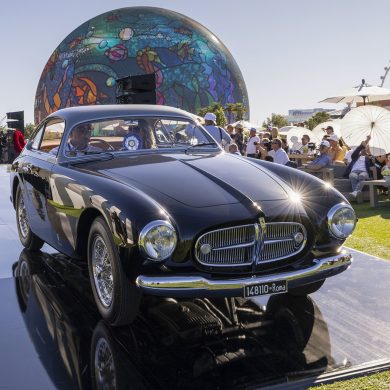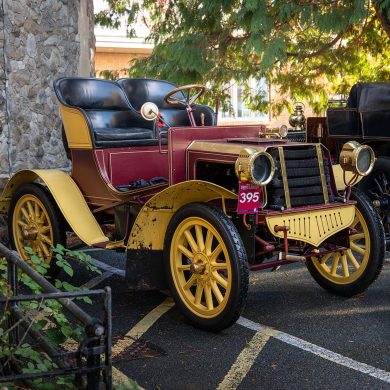Report and photos by Csaba Kiss

One of the highlights was represented by the antique-section. The second oldest car of the exhibition, a Panhard et Levassor from 1898 could be more known by the English public, than the Hungarian one: four years ago, this vehicle participated at the traditional London to Brighton Veteran Car Run, the longest-running motoring event in the world, reserved exclusively to the antique category of the oldtimers. This means that in order to qualify, the cars must have been built before 1905.
Another interesting antique four-wheeler was the 1901 Nesselsdorfer, which is supposed to be the most original example of this brand. It was loaned to the festival by the Transport Museum of Budapest. In 1897, this Czech company, which later become the well-known Tatra, produced the first motor car in Central Europe. As for agility, the Panhard et Levassor was not the only one to prove it, as the 1911 Opel Torpedo on display drove this past June without trouble between Budapest and the Russelsheim headquarters of the German company.
Another section of the exhibition celebrated the 125th anniversary of the car itself, and with that, of course, of the Mercedes-Benz. Consequently, the Benz Viktoria of 1895, actually the oldest car present, was positioned near its brand-colleagues, and not its antique peers. In this section, visitors could admire a 1902 Mercedes Simplex, a Mercedes 10/40 from 1921 (the world’s first series-produced cars with superchargers), or a Mercedes 630 K, built in 1927 (the top model of the brand at the time, a creation of Ferdinand Porsche). But the list of the pre-war curiosities present at the exhibition was far from being over: according to its owner, the 1932 Fiat Balilla Spider Sport is the most original representative of this type in the world.
As customary in exhibitions like this, the organizers from Budapest also realized the magnetic power of the post-war “evergreens.” Thus, brands like Jaguar, Corvette, Maserati, Citroen and Alfa Romeo were represented by their “celebrities” from the E-type to the Merak, or the SM to the Spider. Also, the 1971 Iso Rivolta Lele exerted a continuous attraction on a large number of visitors, as the exhibited piece was one of the only 13 copies of this type equipped with the most powerful, 350 PS (345 hp) Corvette-engine.
As it is suggested by the name of the event, another clear intention of the organizer was to mix oldtimers and the ever-more-popular youngtimers. Therefore, one corner of the exhibition area was taken by some of the most popular vehicles of the 1980s. Being an ex-communist country, for the people of Hungary a BMW Series-6 Coupe or a Mercedes 560 SEC used to be some non-reachable dream cars in that time, but the exhibition offered them some nostalgic moments as well. In the section of the ex-communist car industry, the visitors could discover some of the cars that marked their youth. Many of them had Italian connections: the Lada 1200 or the Polski-Fiat 125 were produced under Fiat-license, while the designer of the Moskvitch 408 was none other than Pininfarina. Besides that, maybe the most exclusive youngtimer of the festival was the Lada Samara Cabriolet produced in just 456 units, mostly for the Western European markets.
Oldtimer and Youngtimer Festival Budapest 2011 – Photo Gallery (click image for larger picture and description)
[nggallery id=337 images=15]
—
[Source: Csaba Kiss]
One Comment
Leave a Reply Cancel reply
You must be logged in to post a comment.










such a beautiful collection of automobiles.